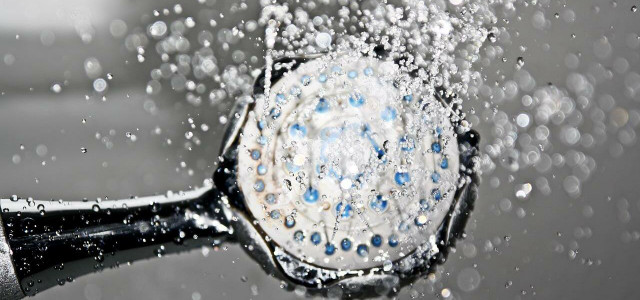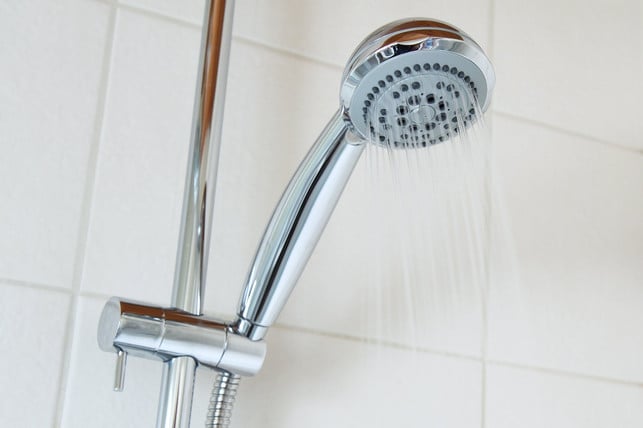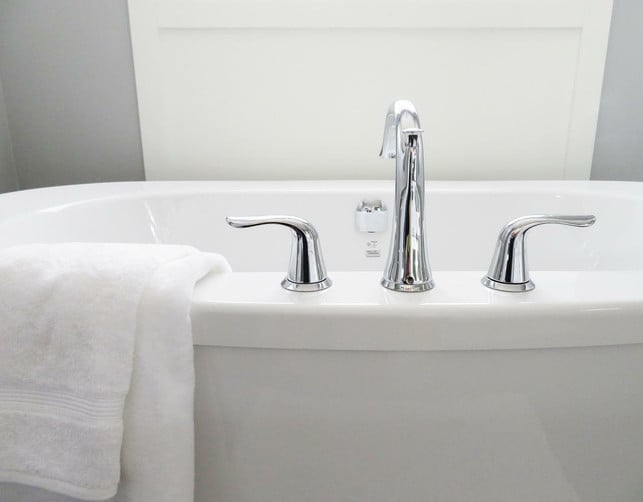
Showering or bathing? Which variant is better for skin and the environment depends on a number of different factors. We clarify you in more detail in the following article.
“Shower instead of bathing” is the common rule of thumb to save water and protect the skin. Especially in winter, a regular full bath is part of the nursing routine for many people: it warms up and stands for relaxation and self -care. At the same time, however, we also use a lot of hot water. So is showing better for budgets, the environment and our health?
Showering or swimming: How healthy is a bath for skin and heart?
How healthy a long and warm bath is for us is scientifically controversial. According to Harvard Health Publishing, some studies indicate that there could be a connection between regular bathing and a lower risk of strokes. In a Japanese study, around 30,000 tests were examined: inside over a period of 20 years. According to the results, people who regularly take a bathroom had an approximately 26 percent lower risk of falling ill from a stroke than the non-bathing test subjects.
The Stiftung Warentest, on the other hand, reports that a bathroom could have a negative impact on our skin if we lie down in the tub too often. Dermatolog: Therefore, recommend that you don’t bathe every day. According to Stiftung Warentest, people who suffer from cardiovascular problems should even do without baths. This is because too high water temperatures can burden our heart. Therefore, you should generally make sure that the temperature of your bathing water does not exceed 38 degrees Celsius.
How healthy a bathroom for our skin is of course also depends on the respective bathing additive. In general, warm water dries out our skin, according to Stiftung Warentest – regardless of whether we shower or bathe. In the bathtub, however, our skin is much more intensely exposed to the water than in the shower. In the case of a bubble bath, there are also surfactants to the warm water that dry out our skin even more. People with sensitive skin should therefore rather add caring oils to the bathing water.
Showering or bathing: This is how showering has an effect on the skin

Bathing every day is not recommended from a health perspective. When showering, however, our skin comes into contact with warm water less. However, whether it is healthy to take a shower every day depends primarily on your individual skin quality. Because showering also attacks the acid protection mantle of our skin. According to the AOK, this is a film of water and fat that repels pathogens and thus protects us from illnesses. Shower gel and soap add even more to our acid protection jacket.
From a medical point of view, it therefore makes more sense to take a shower of just a few times a week and not every day. However, if you sweat particularly strongly or are exposed to a lot of dirt every day and would like to take a shower every day, this is usually not a problem with healthy people. Just make sure that the water is not too hot and use shower gels from certified natural cosmetics. These usually contain less problematic additives. In contrast, people with very sensitive skin should avoid the daily shower. You can read more about this here: How often shower makes sense?
Showering or bathing: water and energy consumption

The fact that showers are more resource -saving than bathing is a widespread principle. So you need about 120 liters of warm water for a full bath according to the Swiss news magazine “20 minutes”. On the other hand, you shower for about five minutes, you only use an average of about 60 liters of water. However, if you are in the shower for 15 minutes with a fully turned shower head, you even use more water than with an average full bath. For a full bath, about 150 liters must be brought to a comfortable temperature, writes the non -profit counseling company Co2online. Some bathtubs even hold up to 200 liters.
We have uncovered other energy-saving myths here:
According to the numbers of the Augsburg general, you can only shower for a full bath for a full bath and use the same amount of warm water. The necessary energy to heat the water corresponds to about half a liter of heating oil in the full bath and the eight-minute shower.
Nevertheless, it is easier to reduce water consumption when showering. For example, you can regularly exhibit the water when sitting and install a savings shower head into your shower. The water is mixed with air by special filters in the shower head. A shower park head can reduce the flow rate – i.e. water consumption – up to 50 percent, writes the NRW consumer center. This saves water and energy – and at the same time protects the environment and wallet.
As a rule, the purchase costs between ten and 30 euros depending on the execution. The change is uncomplicated – unscrew the old shower head and screw the new one. With this simple and cheap measure, energy can be saved without the comfort of suffering.
Consumption quantity at a glance
According to Co2online, a shower parking head is particularly worthwhile if your own consumption is twelve liters and more. Since terms such as “economical” or “ECO” are not protected, they do not guarantee low water consumption. When buying a new shower park head, it is best to pay attention to the exact amount of consumption. According to consumer advocates, it is on the packaging and should be less than 9 liters per minute.
If you want to keep an eye on your own water consumption, you can use so -called “smart shower meters”, according to the consumer advocates. The measuring devices can be screwed between the shower hose and shower fitting – so you get feedback on your own shower behavior and hot water consumption immediately.
Tip: In order to better assess your own shower time, you can also let a piece of music run in parallel to the water that is as long as the desired shower time. So you quickly get a feeling for it.
With material of the dpa.
Read more on utopia.de:
- Cold showering: it is so good for health
- Save water in the shower: works with these 5 tips
- 11 Frequent shower errors that you should avoid
** marked with ** or orange underlined Links to sources of supply are partially partner links: If you buy here, you will actively support Techzle\.com, because we will then receive a small part of the sales proceeds. More information.